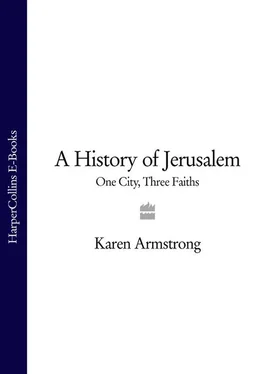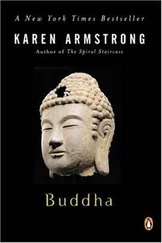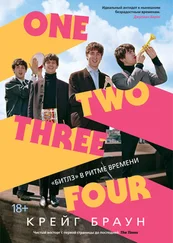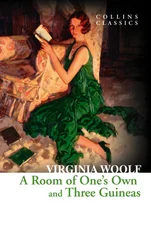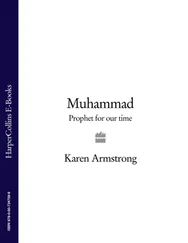On my first morning in Jerusalem, I was instructed by my Israeli colleagues how to spot the stones used by King Herod, with their distinctively beveled edges. They seemed ubiquitous and a perpetual reminder of a Jewish commitment to Jerusalem that could be dated back (in this case) to the first century BCE—long before Islam appeared on the scene. Constantly, as we passed construction crews in the Old City, I was told how Jerusalem had been utterly neglected by the Ottomans when they had ruled the city. It had come to life again only in the nineteenth century, thanks, largely, to Jewish investment—look at the windmill built by Sir Moses Montefiore and the hospitals funded by the Rothschild family. It was due to Israel that the city was thriving as never before.
My Palestinian friends showed me a very different Jerusalem. They pointed out the splendors of the haram al-Sharif and the exquisite madāris , Muslim schools, built around its borders by the Mamluks as evidence of the Muslim commitment to Jerusalem. They took me to the shrine of Nebī Musa near Jericho, built to defend Jerusalem against the Christians, and the extraordinary Umayyad palaces nearby. When we drove through Bethlehem once, my Palestinian host stopped the car beside Rachel’s roadside tomb to point out passionately that the Palestinians had cared for this Jewish shrine for centuries—a pious devotion for which they had been ill rewarded.
One word kept recurring throughout. Even the most secular Israelis and Palestinians pointed out that Jerusalem was “holy” to their people. The Palestinians even called the city al-Quds, “the Holy,” though the Israelis scornfully waved this aside, pointing out that Jerusalem had been a holy city for Jews first , and that it had never been as important to the Muslims as Mecca and Medina. But what did the word “holy” mean in this context? How could a mere city, full of fallible human beings and teeming with the most unholy activities, be sacred? Why did those Jews who professed a militant atheism care about the holy city and feel so possessive about the Western Wall? Why should an unbelieving Arab be moved to tears the first time he stood in the Mosque of al-Aqsā? I could see why the city was holy to Christians, since Jerusalem had been the scene of Jesus’s death and resurrection: it had witnessed the birth of the faith. But the formative events of both Judaism and Islam had happened far away from Jerusalem, in the Sinai Peninsula or the Arabian Hijaz. Why, for example, was Mount Zion in Jerusalem a holy place for Jews instead of Mount Sinai, where God had given the Law to Moses and made his covenant with Israel? Clearly, I had been wrong to assume that the holiness of a city depended upon its associations with the events of salvation history, the mythical account of God’s intervention in the affairs of humanity. It was to find out what a holy city was that I decided to write this book.
What I have discovered is that even though the word “holy” is bandied around freely in connection with Jerusalem, as though its meaning were self-evident, it is in fact quite complex. Each one of the three monotheistic religions has developed traditions about the city that are remarkably similar. Furthermore, the devotion to a holy place or a holy city is a near-universal phenomenon. Historians of religion believe that it is one of the earliest manifestations of faith in all cultures. People have developed what has been called a sacred geography that has nothing to do with a scientific map of the world but which charts their interior life. Earthly cities, groves, and mountains have become symbols of this spirituality, which is so omnipresent that it seems to answer a profound human need, whatever our beliefs about “God” or the supernatural. Jerusalem has—for different reasons—become central to the sacred geography of Jews, Christians, and Muslims. This makes it very difficult for them to see the city objectively, because it has become bound up with their conception of themselves and the ultimate reality—sometimes called “God” or the sacred—that gives our mundane life meaning and value.
There are three interconnected concepts that will recur in the following pages. First is the whole notion of God or the sacred. In the Western world, we have tended to view God in a rather anthropomorphic and personalized manner, and as a result, the whole notion of the divine frequently appears incoherent and incredible. Since the word “God” has become discredited to many people because of the naïve and often unacceptable things that have been asserted and done in “his” name, it may be easier to use the term “sacred” instead. When they have contemplated the world, human beings have always experienced a transcendence and mystery at the heart of existence. They have felt that it is deeply connected with themselves and with the natural world, but that it also goes beyond. However we choose to define it—it has been called God, Brahman, or Nirvana—this transcendence has been a fact of human life. We have all experienced something similar, whatever our theological opinions, when we listen to a great piece of music or hear a beautiful poem and feel touched within and lifted, momentarily, beyond ourselves. We tend to seek out this experience, and if we do not find it in one setting—in a church or synagogue, for example—we will look elsewhere. The sacred has been experienced in many ways: it has inspired fear, awe, exuberance, peace, dread, and compelling moral activity. It represents a fuller, enhanced existence that will complete us. It is not merely felt as a force “out there” but can also be sensed in the depths of our own being. But like any aesthetic experience, the sense of the sacred needs to be cultivated. In our modern secular society, this has not always been a priority, and so, like any unused capacity, it has tended to wither away. In more traditional societies, the ability to apprehend the sacred has been regarded as of crucial importance. Indeed, without this sense of the divine, people often felt that life was not worth living.
This is partly because human beings have always experienced the world as such a painful place. We are the victims of natural disasters, of mortality, extinction, and human injustice and cruelty. The religious quest has usually begun with the perception that something has gone wrong, that, as the Buddha put it, “Existence is awry.” Besides the common shocks that flesh is heir to, we all suffer personal distress that makes apparently unimportant setbacks overwhelmingly upsetting. There is a sense of abandonment that makes such experiences as bereavement, divorce, broken friendship, or even losing a beloved object seem, sometimes, part of an underlying and universal ill. Often this interior dis-ease is characterized by a sense of separation. There appears to be something missing from our lives; our existence seems fragmented and incomplete. We have an inchoate feeling that life was not meant to be thus and that we have lost something essential to our well-being—even though we would be hard put to explain this rationally. This sense of loss has surfaced in many ways. It is apparent in the Platonic image of the twin soul from which we have been separated at birth and in the universal myth of the lost paradise. In previous centuries, men and women turned to religion to assuage this pain, finding healing in the experience of the sacred. Today in the West, people sometimes have recourse to psychoanalysis, which has articulated this sense of a primal separation in a more scientific idiom. Thus it is associated with memories of the womb and the traumatic shock of birth. However we choose to see it, this notion of separation and a yearning for some kind of reconciliation lies at the heart of the devotion to a holy place.
The second concept we must discuss is the question of myth. When people have tried to speak about the sacred or about the pain of human existence, they have not been able to express their experience in logical, discursive terms but have had recourse to mythology. Even Freud and Jung, who were the first to chart the so-called scientific quest for the soul, turned to the myths of the classical world or of religion when they tried to describe these interior events, and they made up some new myths of their own. Today the word “myth” has been rather debased in our culture; it is generally used to mean something that is not true. Events are dismissed because they are “only” myths. This is certainly true in the debate about Jerusalem. Palestinians claim that there is absolutely no archaeological evidence for the Jewish kingdom founded by King David and that no trace of Solomon’s Temple has been found. The Kingdom of Israel is not mentioned in any contemporary text but only in the Bible. It is quite likely, therefore, that it is merely a “myth.” Israelis have also discounted the story of the Prophet MuḤammad’s ascent to heaven from the haram al-Sharif in Jerusalem—a myth that lies at the heart of the Muslim devotion to al-Quds—as demonstrably absurd. But this, I have come to believe, is to miss the point. Mythology was never designed to describe historically verifiable events that actually happened. It was an attempt to express their inner significance or to draw attention to realities that were too elusive to be discussed in a logically coherent way. Mythology has been well defined as an ancient form of psychology, because it describes the inner reaches of the self which are so mysterious and yet so fascinating to us. Thus the myths of “sacred geography” express truths about the interior life. They touch on the obscure sources of human pain and desire and can thus unleash very powerful emotions. Stories about Jerusalem should not be dismissed because they are “only” myths: they are important precisely because they are myths.
Читать дальше
